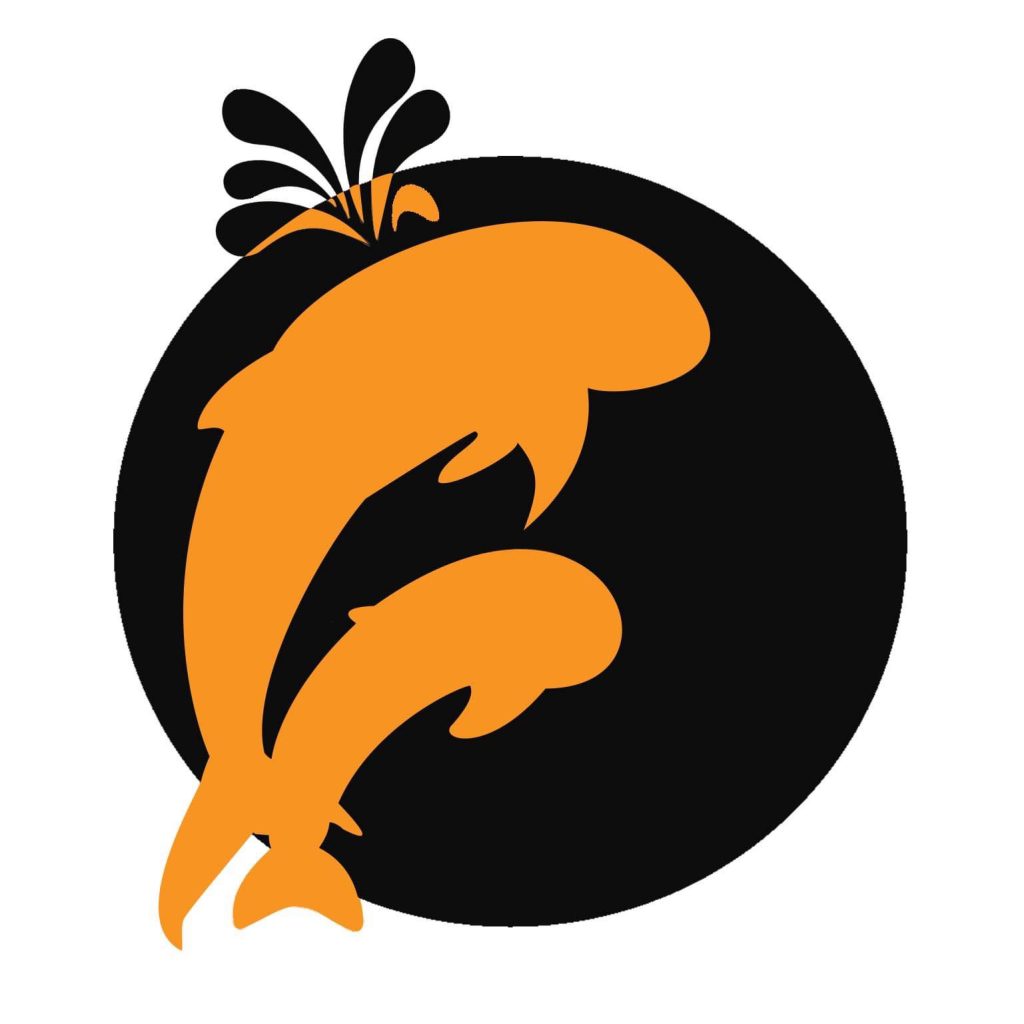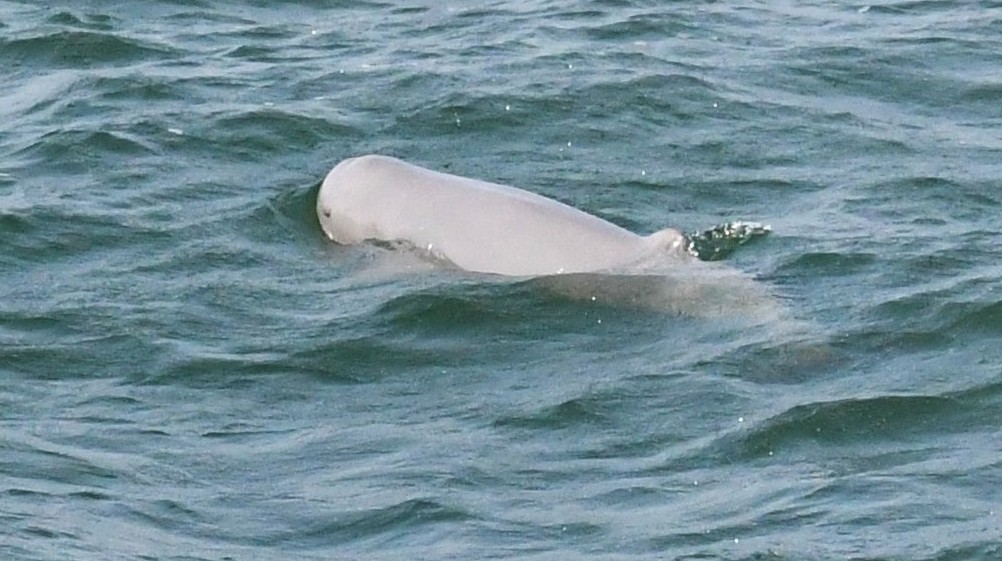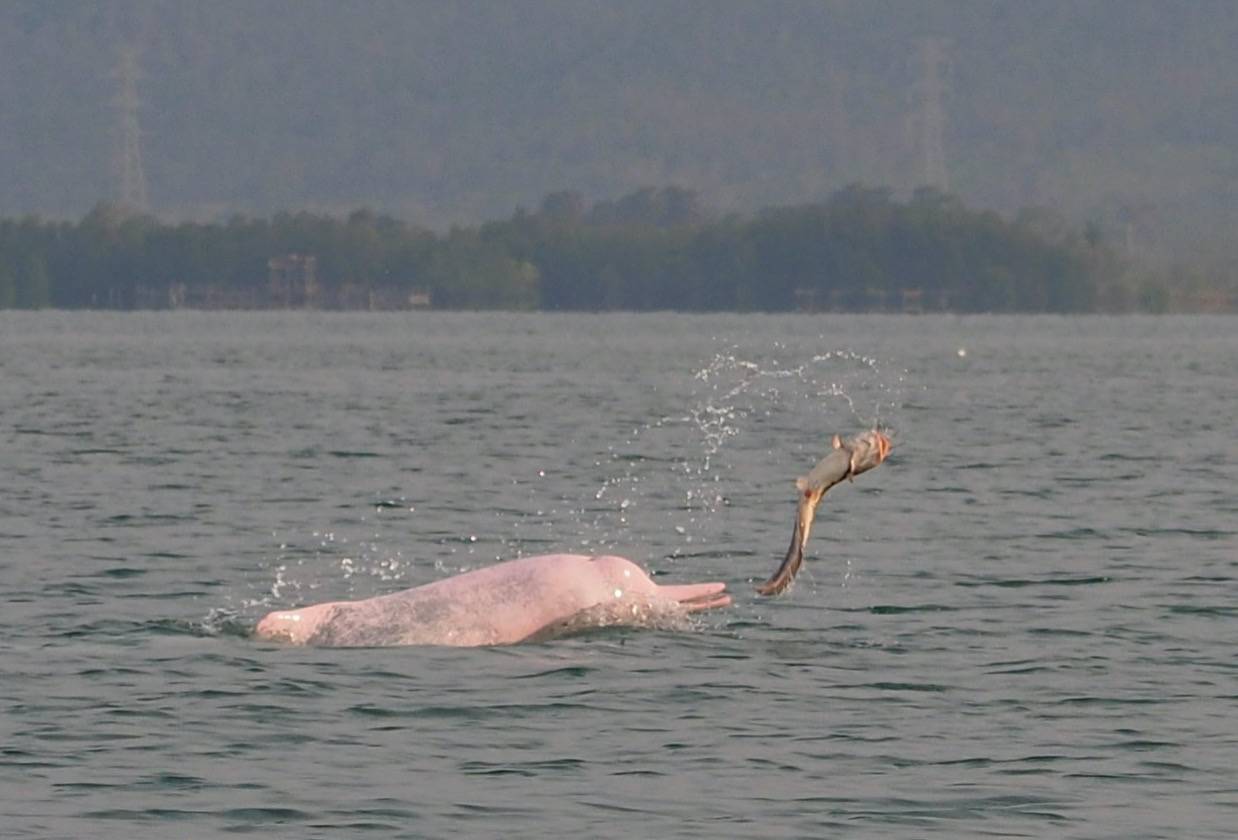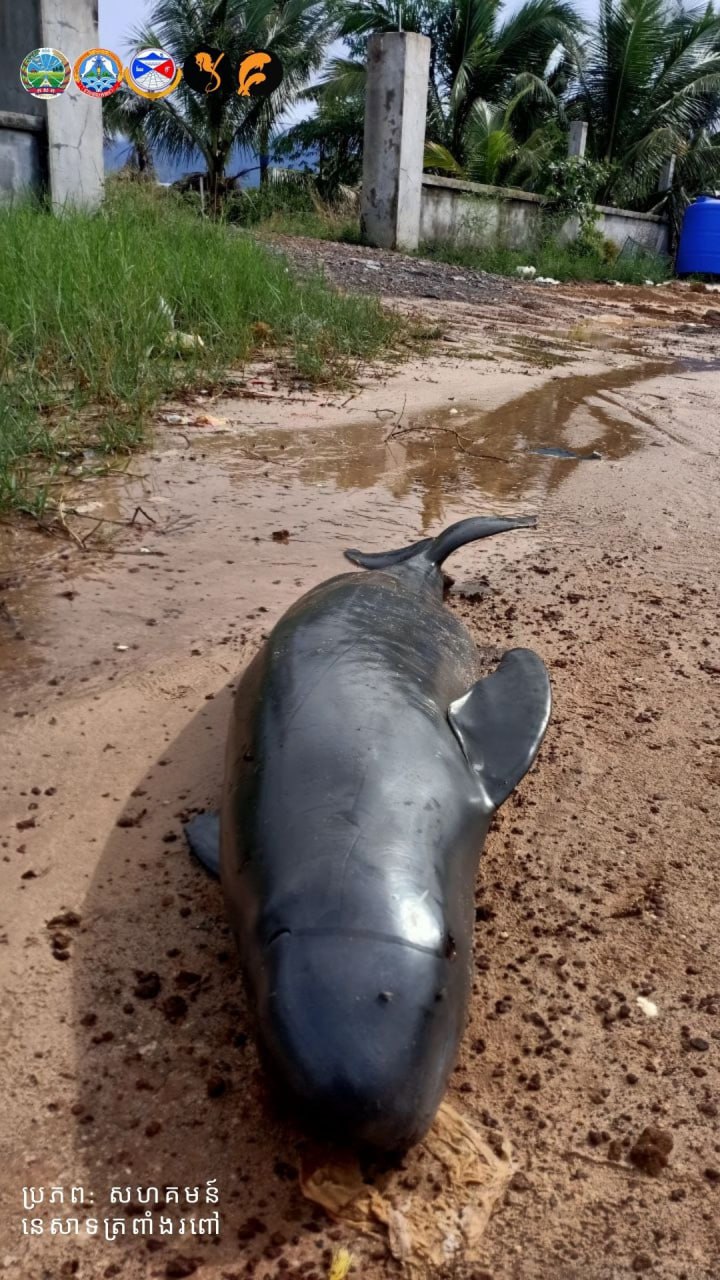
The Cambodian Marine Mammal Conservation Project was launched by MCC in 2016, in collaboration with the Fisheries Administration of the Royal Government of Cambodia.
Our Marine Mammal project is a research-led and community-based project working towards safeguarding Cambodia’s endangered Marine Mammals with a current main focus on the Irrawaddy dolphins and dugongs of Kep Archipelago for the future. It is currently the only long-term study of Cambodia’s marine population of the endangered Irrawaddy dolphins. In 2022 we expanded this work to the Neighbouring province of Kampot and now include the Info Pacific Humpback Dolphins as part of our research program.
2023 will see MCC take its Marine Mammal Project coastal wide to include all of Cambodia’s coastal provinces.
If you are interested in joining the team, click here and apply today!
Marine Mammals in Cambodia
Marine mammals are top predators as well as keystone species.
In other words, the health of marine mammal populations can also serve as indicators for the health and productivity of ecosystems.
Cambodia is home to 11 marine mammal species (Beasley and Davidson, 2007). Although the fisheries law protects these species (MAFF, 2007), its implementation is impaired by the lack of scientific data. Therefore, the data that the Marine Mammal Project collects will be able to fill this gap in legislation.
Irrawaddy dolphins (Orcaella brevirostris)

The Irrawaddy dolphins are the most common marine mammal in our study area. They are an euryhaline species, meaning that they live in freshwater, brackish and marine water bodies.
Although they are present throughout Southeast Asia, the IUCN’s list of threatened species considers them as “endangered” due to declining and fragmented populations.
Morphology
The Irrawaddy dolphin is usually greyish to dark blue-grey or pale blue, while the underside is paler. It has a round forehead, no beak, and an upward mouthline that gives it a smiling appearance. Its neck is long and flexible with a distinct neck crease.
Its dorsal fin is small, triangular and with a blunt tip. Conversely, the pectoral fins are large and spatulate, with curved leading edges and rounded tips. Therefore, they are sometimes mistaken for a finless porpoise, which is smaller and has no dorsal fin.
An Irrawaddy dolphin can weigh 90-200 kgs and reach lengths of 180-275 cm.
Diet
Irrawaddy dolphins’ main diet is fish and squid. They hunt by using echolocation, which is also used for communication.
Reproduction and life span
Females are sexually mature between 7-9 years of age and reproduce throughout the year. The gestation period is about 14 months. A female gives birth to a single calf every 2-3 years. The lifespan of Irrawaddy dolphins is around 30 years. The relatively late sexual maturity and long birthing cycles make these dolphins vulnerable to threats.
Behaviour
Irrawaddy dolphins usually travel in groups of 2 or 3 but can be as many as 25 in one group. They are shy of boats, are relatively slow moving and when alarmed they generally dive.
So far, we have found them to be socialising, foraging, travelling, and diving in the study area. As well as behaviours including spy hopping, breaching, tail slapping and fluke up. In other places, they have also been seen spitting water from their mouths, presumably to help them hunt by confusing schools of fish or for sexual courtship.
Dugongs (Dugong dugon)

Dugongs (Dugong dugon) are cousins of manatees. They share a similar plump appearance, except dugongs have a dolphin-like tail. Unlike manatees, which can live in freshwater, the dugong is strictly a marine mammal.
Commonly known as “sea cows,” dugongs graze peacefully on seagrasses in shallow coastal waters of the Indian and western Pacific Oceans.
Their conservation status is “vulnerable” on the IUCN’s Red List, but are regionally “endangered” in Cambodia’s ocean.
Morphology
The dugong’s body is a large cylindrical shape that tapers at both ends. It has thick, smooth skin that is a pale cream color at birth but darkens to brownish to dark grey with age. It has two teats, one behind each flipper. Its brain weighs a maximum of 300 g, about 0.1% of the animal’s body weight.
With very small eyes, dugongs have limited vision. However, it has acute hearing within narrow sound thresholds. Its nostrils are located on top of the head and can be closed with valves. The lungs are very long and extend almost as far as the kidneys, which are also highly elongated to cope with the saltwater environment.
The main difference between males and females is the location of the genital aperture in relation to the umbilicus and the anus. And the male’s testes are not visible externally.
Locomotion
Dugongs swim by moving the two flippers and their broad tail in an up and down motion, and by use of their two flippers. They are slow-moving and have little protection against predators. Young dugongs hide behind their mothers when in danger. However, they have no natural predators in the Kep Archipelago other than humans, making them a keystone species and an important indicator species of ecosystem health.
Diet
Dugongs are often called “sea cows” because they graze on the seagrasses that grow on sandy sea floor in shallow, warm water. A dugong can graze up to 40kg of seagrass per day (Gilon, 2022).
Reproduction
Females reach sexual maturity around 6 years of age and may have their first calf between the ages of 6 and 17. Males reach sexual maturity between 6 and 12 years of age.
Because breeding occurs year-round, males are always waiting for a female in estrous. The average reproductive rate is very low, about 1 calf per 2.5-7 years depending on location. This may be partially due to the long gestation period of 13-14 months.
Threats
Human activity is the biggest threat to dugongs.
First of all, dugongs are threatened by seagrass habitat loss and degradation due to coastal development and water pollution. On the other hand, dugongs are also victims of bycatch and direct hunting. They have been hunted for food, oil, leather, traditional medicine, amulets, ornaments and jewelry despite the conservation status. (Marsh et. al., 2002).
Indo-Pacific Humpback (Sousa chinensis)

Indo-Pacific Humpback Dolphins (Sousa chinensis) are Found throughout Cambodian waters. We are currently focused on the local population in Kampot Province and have individually identified around 40+ individuals.
Unlike the shy Irrawaddy, these dolphins often put on quite a show for our marine mammal researchers.
Indo-pacific finless porpoise (Neophocaena phocaenoides)

Indo-Pacific Finless Porpoise (Neophocaena phocaenoides) Are extremely rare in Cambodia our Marine Mammal Research Team has only one confirmed sighting and sadly this was a stranding, after being caught in a surface gill net.
The research aims are to collect data on the dolphin’s behaviour, abundance, distribution, residency, threats, and critical habitats. As of 2022, Marine Conservation Cambodia’s Marine Mammal Program has successfully:
- conducted 1000+ land surveys
- conducted 1000+ boat surveys
- trained 100+ marine mammal observers
- photo-id 80+ individuals this has been part of a Cambodian student thesis study
- Recorded 20+ strandings
- continued passive acoustic monitoring
- attained IUCN-IMMA (Important Marine Mammal Area) status
- collaborated with local fishers as citizen scientists
- trained Khmer marine mammal scientists
The collected data helps us delineate and protect their critical habitats within Cambodia’s Kep Archipelago and the wider Cambodian Coast. You can also check out the research archive for useful publications.
Volunteer program overview
Requirements:
- available for at least 1 month
- able to work in early mornings and late evenings
- have a passion for marine mammals and conservation
- be dedicated, motivated and hard-working interns
- preferably, but not necessarily, university students or recent graduates
Training schedule:
| Session 1 | introduction to the Project |
| Session 2 | research methods on land and boat surveys |
| Session 3 | marine mammal identification and behaviour |
| Session 4 | marine vessel identification |
| Session 5 | data sheet and data entry skills |
| Session 6 | drone footage analysis |
| Session 7 | research theory test |
| Session 8 | in Field Practice |
Other possible activities/ skills:
- dolphin photo-identification
- passive acoustic monitoring for marine mammals
- scientific data processing and analysis
- response to marine mammal strandings
- scientific literature review
- education and outreach to government groups, the scientific and local communities
- you may also learn from other projects depending on your interest, skill set, and length of stay
If you are interested, apply to become a volunteer today!
